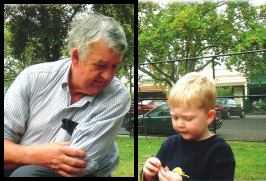
Curated with aloha by
Ted Mooney, P.E. RET

The authoritative public forum
for Metal Finishing 1989-2025

-----
Stainless Steel Polishing Problems
I am polishing stainless steel and I have a problem with hydrogen bubbles appearing in the surface. I believe this is caused from heat in the polishing process. How can I prevent this? Your comments would be appreciated.
Regards,
Paul ClancyAustal Ships - Henderson, Western Australia, Australia
2001
|
|
A. I thought that most electro-polishing was done with the work anodic. Thus you get oxygen produced. Also I thought this was normal. I find the best thing to do with electro-polishing is steer well clear of it! If you wish to do electro-polishing may I suggest your next question is - where can I find out about electro-polishing? One thing to do about the bubbles may be to agitate the work manually.  Martin Trigg-Hogarth surface treatment shop - Stroud, Glos, England A. As a ferrous metallurgist, I can't accept an explanation of "heat of grinding" producing such bubbles from within the metal. What grade of stainless? What form (eg, sheet, plate, casting)? What size "bubbles"?  Bill Reynolds [deceased] consultant metallurgist - Ballarat, Victoria, Australia We sadly relate the news that Bill passed away on Jan. 29, 2010. |
Q, A, or Comment on THIS thread -or- Start a NEW Thread